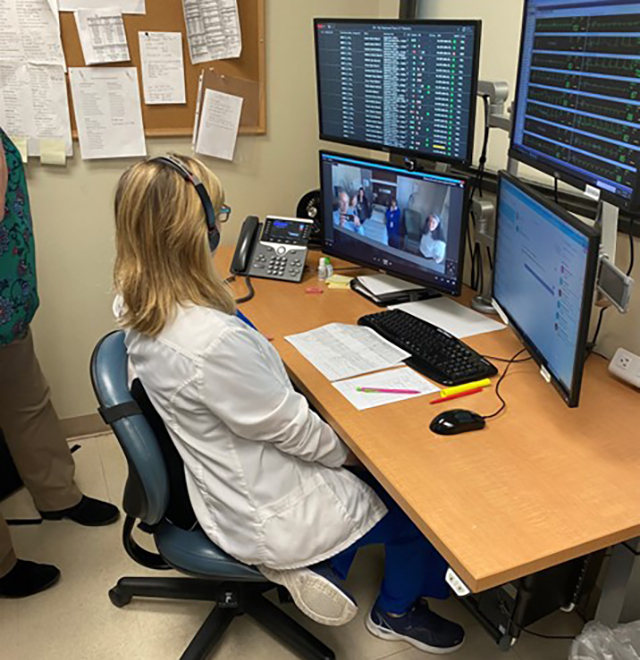PFAC Members Participate in Development of Virtual Nursing Initiative

Example of patient communicating with virtual nurse

A virtual nurse at work
In the fall, six Suburban PFAC members (three PFAs and three staff members) joined staff members and PFAs from across Johns Hopkins Medicine (JHM) to discuss implementation of virtual nursing in the Johns Hopkins Health System. Virtual nursing is designed to improve responsiveness to patient and family needs by using advanced technology — primarily immediate access to remote nurses through use of inpatient room audio-video technology. By involving PFAs early in the development of how to use this innovative technology, JHM enhances the likelihood that concerns raised by patients and families will be resolved.
The COVID-19 pandemic and its aftermath exacerbated a severe shortage of nurses that impacted not only Johns Hopkins Medicine but health systems throughout the country. To deal with this problem, health systems have begun to explore and implement virtual nursing. Studies of virtual nursing show an improvement in hospital quality metrics and the quality of admissions and discharges, including fewer readmissions, improved nurse satisfaction and retention, and a decrease in documentation for bedside nurses and use of nursing agencies.

PFAs Stephen Bokat, Linda Bergofsky and Judith Sackheim (right) represented Suburban Hospital at a virtual nursing development initiative.
The virtual nursing system consists of two-way audio-visual communication between the patient and the virtual nurse (see photos below). For patients connected to monitoring equipment, the virtual nurse can check vital signs. The virtual nurse can also check the status of other equipment such as infusion (IV) pumps. Of course, the virtual nurse also can communicate with the bedside nurse and other practitioners assigned to the patient.
JHM continues to explore the best way to implement virtual nursing, and it plans to establish pilot programs in several of its hospitals.
